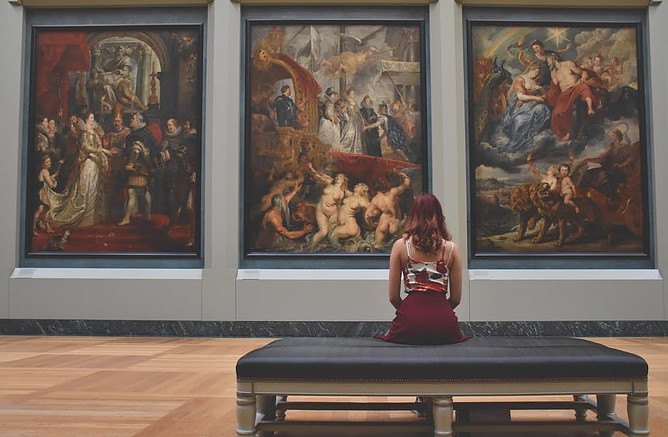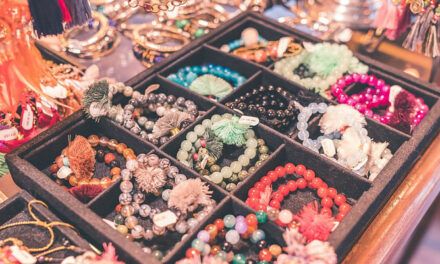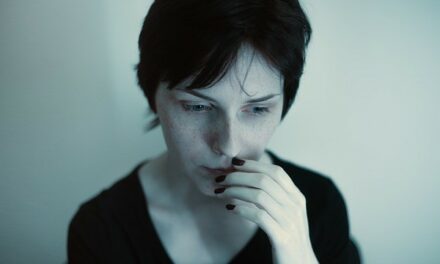Mental health has become one of the most important aspects of our overall health, as our awareness of mind widened over the recent decades. With or without our knowledge, most of us going through challenges related to mental health, the most, of course, we overcome without medical attention, but some progress as mental illness.
Among the young and the middle-aged individuals, depression and anxiety are becoming more prevalent, as doctors put more attention to listen to their patients more carefully. As we grow old, Alzheimer’s and dementia seems to dominate the mental health challenges.
Regardless of the mental health issue you or your loved one are going through; art therapy seems to have a role in managing it. Not only that, art therapy is proven to be beneficial in managing autism spectrum disorders and people with learning difficulties who struggle to express themselves.
This article is all about proven art therapy ideas for mental health and your wellbeing, especially if you (or your loved one) have anxiety, depression, stress issues, emotional issues, panic attacks, psychological conditions, psychiatric conditions or forgetfulness (dementia). We will be also touching on to benefits of art therapy for depression (in adults and children) and how art therapy helps in depression. The highlight would be the practical tips and art therapy ideas for adults, children and teens, which you can start on straight after reading the complete guidance.
Before digging deeper into the topic, let’s find out what art therapy really is.
What is art therapy?
Art therapy is a therapy that can improve a person’s mental, emotional, and physical well-being through the use of a creative expression.
In this process, any person who finds it difficult expressing their emotion verbally can now use markers, chalks and paint to perform any particular type of art therapy (we will discuss what are they shortly!), to create a stress painting, draw their emotions, design a postcard, etc.
The versatility of art therapy makes it perfect for all ages, both children and adults, and can also be a wonderful recreational activity for anyone at any age bracket.
Art therapy can help a person to open up hidden feelings and help him to work on them.
As such, one of the major aims of art therapy is to assist people in expressing themselves and in the process discover new personal ideas and possibly build a new lifestyle.
History of art therapy
The use of art as a medium to communicate ideas has been since the commencement of human history. With time, art has turned to an instrument for symbolism and self-expression.
In the 1940s, art therapy was defined and elaborated into a separate discipline that independently grew in Europe and America.
Adrian Hill was the first person to have referred art therapeutic applications as art therapy in England. When he was being treated for tuberculosis
in a sanatorium as an artist, he suggested to his fellow patients to participate in art projects. That was how he started, and so many of his work as an art therapist is discussed in the book “art versus illness.”
Edward Adamson expended hill’s work. Adam and Hill then worked together to introduce the new therapy to the British patients that have spent a long time in mental hospitals, starting with the Netherne Hospital
in Surrey.
Adamson continued to establish the program in more facilities up to 1981 when he retired. He also opened a studio for patients, to where they could visit to create art freely with no judgment and comment from others.
Adamson was able to gather and display more than 100,000 pieces of art created by the patient during his career days. He promoted a great comprehension of the creativity and mentally ill contributions by sharing their profit with the public. Out of the greater number of artworks, he gathered over the years, only about 6000 pieces are currently left, and many of them are being displayed at the Welcome Library.
Edith Kramer and Margaret Naumburg were also a two art therapy pioneers in the United States. Naumburg started calling her work art therapy in the forties. Dr. Kramer, an Australian woman, when she became an American citizen in 1944, established the art therapy program for graduates at the New York University. She served from 1973 to 2005 as the Adjunct Professor of program.
Many mental health facilities and hospitals by the middle of the 20th century started adding art therapy programs, and they have observed how it could promote developmental, emotional and cognitive development in children. Art therapy is still expanding, and it is becoming a very important instrument for communication, assessment, and treatment of adults and children alike with mental health challenges.
Let’s look at the different types of art therapy now.
Types of Art Therapy
Art therapy has various kinds, but we are going to consider a few of the most popular ones that are consistently being used in managing mental health.
Painting
This includes constructing and manipulating images with the help of tools. In Art therapy, painting can involve different painting styles such as spray painting, acrylic paints, watercolors and many more.
Paint supplies and methodologies are normally familiar to many clients regardless of their state of memory and cognition. Nevertheless, it is believed that to participate in this type of therapy, some ‘talent’ and ‘passion’ is important.
Painting supplies are majorly fluids and can be less controlled than in the case of drawing supplies. It is important to consider this if the client is having issues with perfectionism and control.
Sculpture
Sculpture gives the patient a dimensional view. It can make him/her see the situation in many dimensions and that it can be solved in different ways. This will also provide users with an opportunity to construct and shape his/her environment.
Sculpture therapy can be achieved with the use of clay, paper Mache or paper clay, carving tools and some other decorative tools that may serve as additional tools.
Drawing
This method in Art therapy is all about making a simple mark using an item.
Drawing supplies consist of pens, pencils, pastels, crayons, charcoal, and paper.
The majority of patients have already known drawing supplies and can freely use them.
When the drawing is being perceived as a specialized skill, it then becomes a great challenge for a patient who intends to participate in the drawing method in the purpose of Art therapy.
As it is in all art methods, the therapist should make it clear to its clients that the aim of this therapy method is not to enact a professional artwork but rather to express emotions through art.
Writing
This Art therapy type is not usually considered as an outlet of visual creativity, though it can be used in story-boarding, art journaling, and comics.
In Art therapy, the client can write a journal and on top of the journal create art as an act of extricating himself from what he has written.
Paper and pen are part of writing supplies, though supplies of general art may also be used depending on the patient’s project.
The patient’s overall feelings and thoughts about specific issues can be solidified with the help of the use of writing and particular keywords in art therapy.
Collage
Collage in art therapy is rested on manipulating already created and designed works like word titles and magazine images. This won’t be a difficult job for patients who don’t see it as a big deal starting a new thing or making decisions.
Image manipulations are seen as a very easy way to express feelings and thoughts because it does not focus much on creation (drawing) but construction.
Patterned paper, paper-based substrates, stamps, magazines, adhesives, and brayers are all included in the art supplies. Clients can be helped to add other necessary expressions with the use of pens, paints, and pencils.
Digital
The use of digital resources in art therapy is yet at its development, and it is still growing.
The digital method includes manipulation of photos or the creation of elaborated artistic projects with the use of video editing software or graphic software. The digital part of art therapy is likely to become very necessary for the generations to come because of the growing digital age.
Textile
In Art therapy, the use of textiles involves using puppets and stuffed toys.
Adults and children find it more rewarding and beneficial using textiles as compared to using fine motor skills required art supplies. Textiles can add a sensitive level of texture and softness, which can help to provide a level of safety and comfort for the client, which can assist in building confidence between the therapist and the client.
Photography
The use of photography in art therapy permits patients to incorporate memories, old photographs and then to manipulate these photographs digitally. Lives photos of patients can be used to help in stimulating memories and to construct a more appreciative framework using digital technology on the same images.
A series of photographs can be created by the client using the technologies of the mobile phone that is related to the storyboarding concept.
As such, smartphones and digital cameras, and old photographs are included in the supplies. The photographs can be changed with more techniques of art therapy, either printed or digitally.
People who should benefit from art therapy?
People who find it hard to express their emotions
These particular sets of people can show their feelings without much verbal expression but with the use of art therapy.
People with a terminal or chronic illness
Art therapy can help patients rebuild their sense of freedom and control.
People in the justice system
It is also advisable that prisoners use art therapy to assist with their emotions healthily.
People in the autistic spectrum
Art therapy can help build communication skills to a great extent as well as help calm people and distract people.
People with dementia
Using the creative side of the brain can help with stress levels and personal identity can be restored, which may be difficult for people with dementia to keep.
Tip: Did you know that high blood pressure and diabetes can cause dementia? Dementia is one of the possible complications of hypertension and diabetes.
- People with mental health problems.
Many mental health institutions have recommended that art therapy can be beneficial to people with schizophrenia and other similar conditions.
- People with learning difficulties.
Those with learning difficulties that finds it very unfavourable to verbally express their feeling can benefit greatly from art therapy.
How art therapy can help mental health?
It is advisable to use art therapy as a complementary treatment while treating mental health traditionally (i.e. doctors’ traditional approach). The purpose is to reduce anxiety and stress, process feelings, increase self-esteem and manage behaviors.
The following are the ways art therapy can help you to boost your personality and mental health.
Emotional release
One of art therapy’s greatest benefit is the link to providing a sound outlet for self-expression and doing away with all fears and feelings.
Within some personalities, anger and sadness most times cannot be communicated verbally. When one is not able to express him/herself, and an emotional release is desired, he/she can do it with the help of creating art.
Self-esteem
This process possibly improves one’s confidence and self-appreciation by making one feel self-accomplished.
Self-discovery
Art creating can help reveal some hidden feelings in one’s subconscious mind.
Stress relief
Combating depression, emotional trauma or anxiety can be ‘stressful’ both physically and mentally. Making art can relieve stress, and help with relaxing the body and mind.
Tip: Here are the stress symptoms specific to men.
Experts and mental health professionals believe that art therapy provides many benefits like rendering a sound outlet to relieve emotions, giving a sense of control over one’s life, boosting self-esteem and helping one to understand and know him/herself better.
Benefits of art therapy for depression and anxiety
Art therapy can be beneficial to everybody.
The American Art Therapy Association says that art therapy exercises help “foster self-esteem and self-awareness, cultivate emotional resilience, promote insight, reduce and resolve conflicts and distress.”
Nevertheless, art therapy has been proven also to help especially those with anxiety, mainly when it is used with other methods of treatment.
Tip: Here are the anxiety symptoms specific to women, men and children. They are not the same! And, anxiety attacks are different from panic attacks too.
How art therapy helps depression?
Studies have proven that art therapy provides the following effects on people with anxiety and depression.
Encourages self-expression
Many people are fighting with anxiety-related feelings, thoughts or incidents that they would not be able to identify by themselves or loudly talk about.
As I noted earlier, art therapy can help one to express him/herself clearly.
Individuals battling with anxiety and depression can discover how to express their feelings constructively and creatively with the guidance of an experienced and compassionate therapist. Expressing ourselves creatively helps us to connect with emotions and experiences in a healthy and rewarding manner.
It calms the nervous system
The activities of art therapy are calming, quiet and meditative, which helps in relieving symptoms of nervousness, irritability, and stress. A peaceful mind can process severe experiences and emotions.
Mental health professionals have also discovered that through a reasonable time of calm, deep inner conflicts can be resolved. Most of the time, individuals experience more inner peace with the help of this experience.
Increase self-awareness
People become cognizant of their new selves when they engage themselves in a creative pursuit. Through expressive, meditative exercise, an individual’s sense of self-awareness increases.
Tip: Garlic is believed to reduce Alzheimer’s disease and dementia.
Art therapy ideas for depression and anxiety in adults
Adults indeed have better language experience than children, but it doesn’t mean that they have a better understanding of their emotions and can tell others what they are experiencing any better. Sometimes, it is even challenging to understand the ‘pains’ and the reason while handling adults who need activities to understand themselves better.
Here, we will look into 3 effective art therapy ideas for adults, namely poem collage, self-care box and mindfulness beads.
1. Poem collage
Self-criticism makes creative act difficult. Sometimes that difficulty in finding words to express how you are feeling can be because you are afraid of how poor the expressions might be.
By the creation of a poem from the multitude of words gathered from sources like newspapers, old books, and magazines, you can create a poem un-self-consciously, which shapes pre-existing words to how you feel.
The processes of poem collage
Ø Gather the materials like old books, magazines scrap paper and newspapers.
Ø Search for words that inspire you and cut them out.
Ø Collage the cut-out materials just the same way with a visual collage
Ø The story can begin with a theme in mind or story, or the choices of the word can be allowed to decide the final result.
Ø When this kind of project is used in a therapy setting or group, participants could be asked their chosen themes, interpretations of the poems or choices of the word.
2. Self-care Box
The self-care box keys are inspiration an affirmation.
Having something small, beautiful and tangible can be comforting in times of trouble. This self-care box can serve as a supply, and the process of creating it can be therapeutic.
The process of self-care box.
Ø Decorate the box with a cardboard box and any other materials bearing in mind that it will be a place for baubles and little items of importance.
Ø Line or decorate the box with favorable assertions and may be generated individually, or by the members of the group or even found online. Simply fold them and put them in the box so it can be read whenever it will be needed.
Ø The box should be used for comfort providing items like family or friend’s pictures, worry stones, clips of poetry or quotes, treasured pieces of jewellery, or pressed flowers. Some massage gift cards or movie vouchers can also be left in the box to serve as self-care when one feels drained.
3. Mindfulness beads
Similar to a fidget cube or worry stone, mindfulness beads is a cheap and simple coping process that is also portable and fun to create.
The process of mindfulness beads.
Ø Buy your favorable beads
Ø Makes a lace or string for a bracelet, place the ‘pellets’ according to your choice or so that would make you happy.
Ø While still wearing the beads, you simply can reflect on the beauty, sounds of the beads, texture, or touch.
Ø You have to concentrate on one bead at a moment, giving meaning to each bead and using them to generate medication.
Tip: Transcranial Direct Current Stimulation is proven to help depression and other common mental diseases.
The benefit of art therapy on children
For most children, art-making is a natural way of communication.
Art therapy is always considered beneficial in assisting children with several challengers including language and speech disorders, emotional and personal disorders, childhood trauma, deprivation and abuse, grief and loss.
These are some of the significant benefits of art therapy on children.
Emotional safety
Art therapy provides children with a better and safe way of sharing their stories in a manner that is not confrontational.
Artspace
Children can have a place to research and explore, test boundaries, experiment, make mistakes, let go, process conscious and unconscious materials, and then in an acceptable manner to reflect it.
Tangible reference
Creating something tangible within the period retains the experience, and refers to it later, if necessary, in its curative process.
Metaphor
The metaphor and symbolic language in the use of art material can be a powerful way for children to express their feelings and emotions. The opportunity to express these feelings also allows the child to understand many hidden things about him/herself.
Art therapy ideas for teens for anxiety and depression
Teenagers are always seen as the most challenging age group of people to counsel, especially when it concerns mental health therapy.
Adolescents and teens constantly struggle to express their feelings and struggles in traditional talk therapy. Also, in teens and adolescent years, there is a crucial developmental period they experience. Teenagers especially have some peculiar struggles, and always in need of alternative therapeutic interventions.
Here are a few of the many kinds of creative art therapy ideas for teens.
Music therapy
Music therapy includes composing, listening, singing and dancing to music. It can incorporate a diversity of instruments and types of magic.
Magic can create a mindful and relaxing experience for teens and everybody in general.
Music therapy can help teens in;
Ø Recognizing and identifying feelings.
Ø Anxiety and depression management.
Ø Stress management etc.
Art therapy
Expressive art therapy is the use of various art channels as a way to encourage teens to express stressful thoughts and feelings.
Teens and adolescent can benefit from Art therapy by;
Ø Increasing self-esteem.
Ø Enhancing self-awareness.
Ø Helping in problem-solving.
Ø Relieving symptoms of anxiety, depression, and stress.
Drama therapy
Also referred to as psychodrama, it is an empirical curative approach to make positive changes easier. It uses specifically the theatre or drama processes to achieve and work through identified curative goals.
Drama therapy includes;
Ø Storytelling.
Ø Improvisation.
Ø Roleplay.
Creative writing
Many therapies that work with adolescents and teens use creative writing as a way to express emotions into the written word. Often time, writing can be a much effective way compared to talking to have teenagers to express themselves fully. Some people think it is because it gives enough time to think of what to say. Others think that writing would be of more benefit, as talking includes another person’s response and reactions.
Tip: Have you heard about TENS and EMS technologies? If not, you may find our TENS and EMS Selection Guide a relieving article.
Tip: It would be worth considering the Omni Stimulator.






